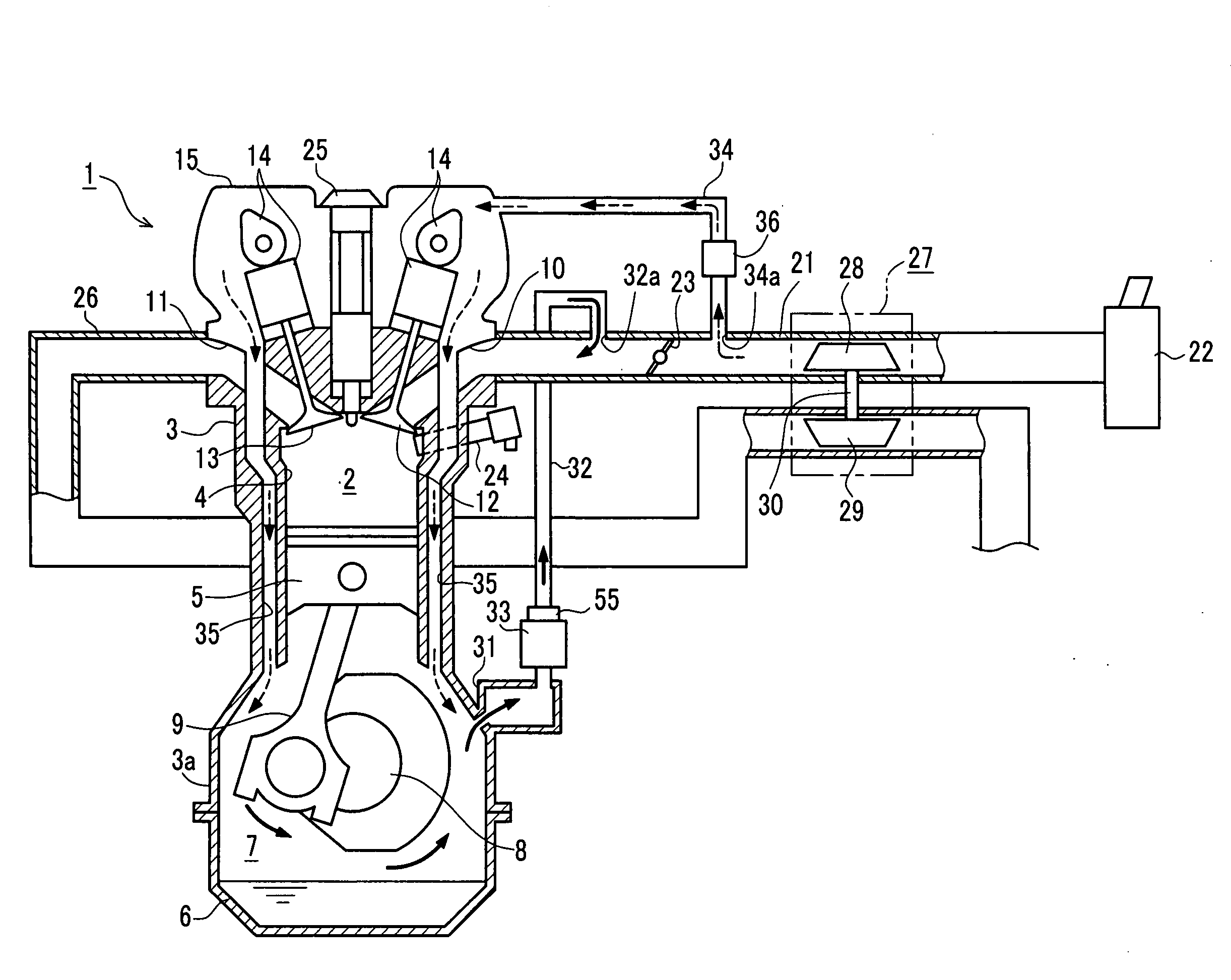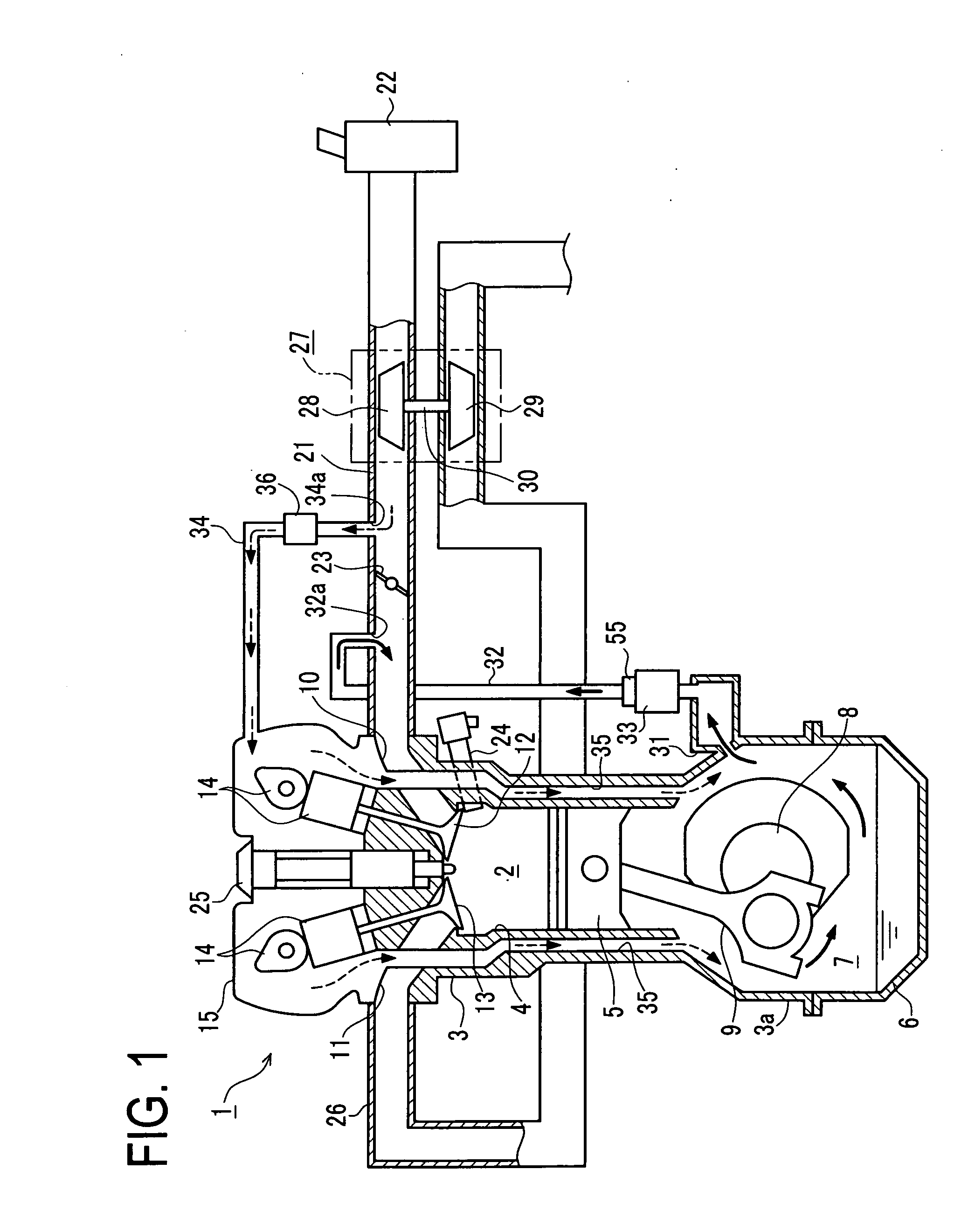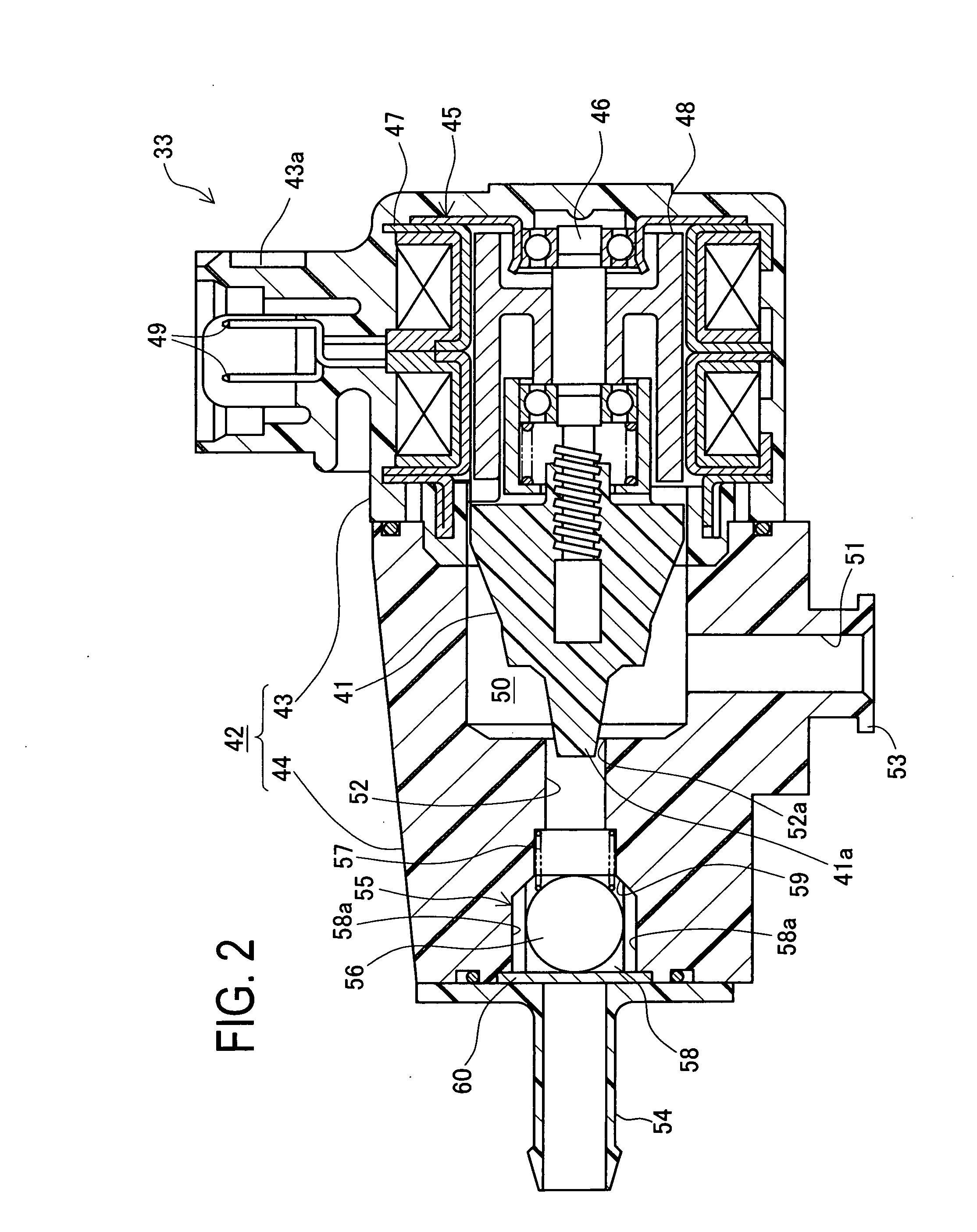Engine blow-by gas returning apparatus
a technology of blowing gas and return passage, which is applied in the direction of combustion engines, machines/engines, crankcase ventillation, etc., can solve the problems of damage to the valve element of the pcv valve and the crankcase, high-pressure gas flows back in the return passage to flow in the pcv valve,
- Summary
- Abstract
- Description
- Claims
- Application Information
AI Technical Summary
Benefits of technology
Problems solved by technology
Method used
Image
Examples
first embodiment
[0027]A detailed description of a first preferred embodiment of an engine blow-by gas returning apparatus embodying the present invention will now be given referring to the accompanying drawings.
[0028]FIG. 1 is a schematic configuration view of a gasoline engine system including a blow-by gas returning apparatus in this embodiment. An engine 1 constituting this engine system is a multiple-cylinder ignition engine of a direct injection type arranged to directly inject fuel into a combustion chamber 2. An engine block 3 constituting the engine 1 is formed with a plurality of cylinder bores 4 in each of which a piston 5 is provided to be vertically movable. A lower part of the engine block 3 is provided with a crank case 3a, which is assembled with an oil pan 6. Those crank case 3a and oil pan 6 form a crank chamber 7. In this crank chamber 7, a crank shaft 8 is rotatably supported and coupled to each piston 5 through each connecting rod 9.
[0029]The combustion chamber 2 formed above th...
second embodiment
[0041]A second embodiment of an engine blow-by gas returning apparatus according to the present invention will be described referring to the accompanying drawing.
[0042]In each subsequent embodiment, the same or similar components as those in the first embodiment are given the same reference signs and their details are not omitted. The following explanation will be made with a focus on differences from the first embodiment.
[0043]FIG. 3 is a sectional view of a PCV valve 61 in the second embodiment. The blow-by gas returning apparatus in this embodiment differs from the first embodiment in a configuration of the PCV valve 61. Specifically, this PCV valve 61 differs from that in the first embodiment in the shape of the sub housing 44 and the placement of the check valve 55. The sub housing 44 is formed to be axially shorter than that in the first embodiment. In the second embodiment, the check valve 55 is placed in the inlet port 51. This check valve 55 is identical in structure to tha...
third embodiment
[0045]A third embodiment of an engine blow-by gas returning apparatus according to the present invention will be described referring to the accompanying drawing.
[0046]FIG. 4 is a schematic configuration view of a gasoline engine system including a blow-by gas returning apparatus in the third embodiment. FIG. 5 is a sectional view of a first PCV valve 62 in the third embodiment. This embodiment differs from the aforementioned embodiments in a passage configuration of the blow-by gas returning apparatus, a configuration of the first PCV valve 62, and others. Specifically, as shown in FIG. 4, the blow-by gas returning apparatus is further provided with a second returning passage 63 and the second PCV valve 64. The second PCV valve 64 is provided integral with the first PCV valve 62. The second returning passage 63 is disposed so that one end connected with the second PCV valve 64 and the other end communicating with the intake passage 21 upstream of the supercharger 27. As shown in FIG...
PUM
 Login to View More
Login to View More Abstract
Description
Claims
Application Information
 Login to View More
Login to View More - R&D
- Intellectual Property
- Life Sciences
- Materials
- Tech Scout
- Unparalleled Data Quality
- Higher Quality Content
- 60% Fewer Hallucinations
Browse by: Latest US Patents, China's latest patents, Technical Efficacy Thesaurus, Application Domain, Technology Topic, Popular Technical Reports.
© 2025 PatSnap. All rights reserved.Legal|Privacy policy|Modern Slavery Act Transparency Statement|Sitemap|About US| Contact US: help@patsnap.com



